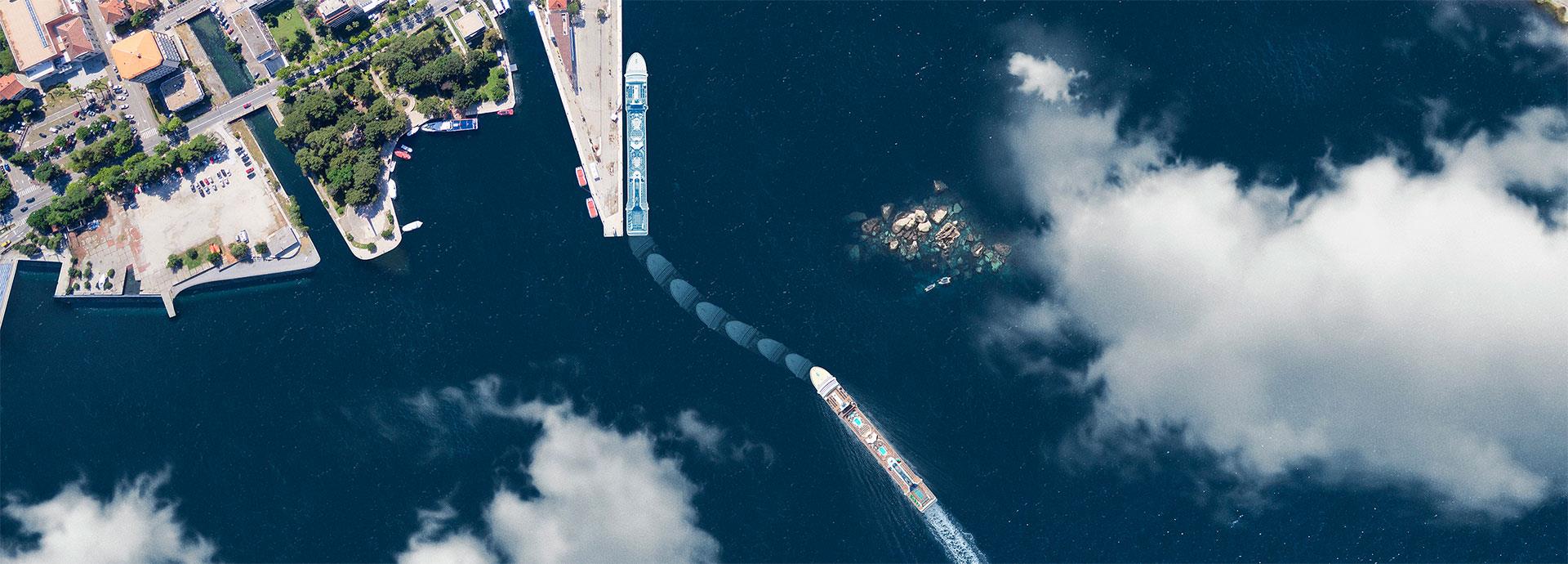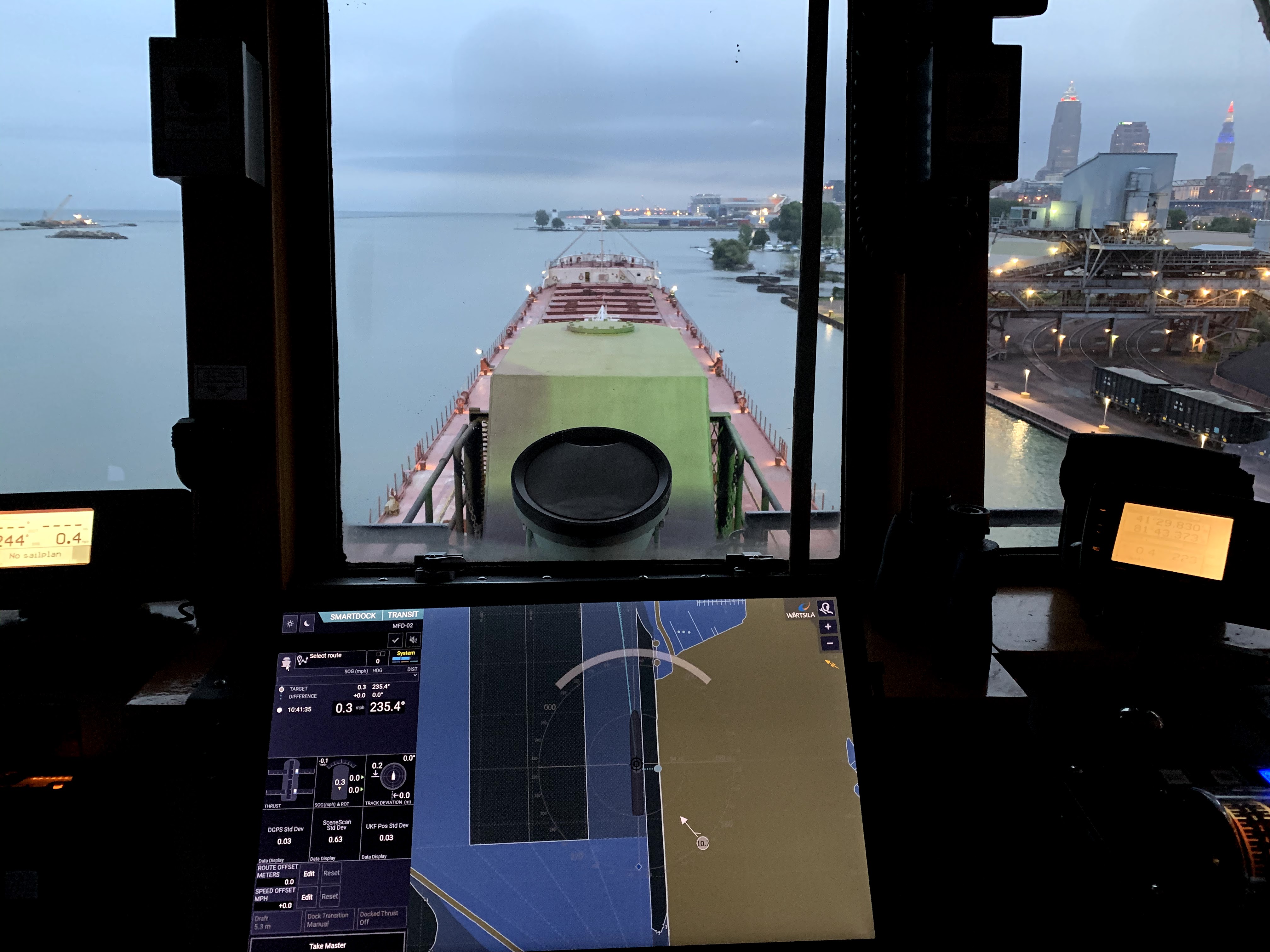

The term autonomous shipping conjures up an image of fleets of unmanned vessels transporting cargo and passengers across the world’s oceans. But in reality, the path from manual to autonomous operations very likely is incremental. Smart systems with autonomous components are already enhancing the safety, cost efficiency and environmental performance of vessels, addressing the significant challenges currently facing the global maritime industry.
Safety is always top priority. The 2019 Shell Zero Incident report found that on average shipping is 20 times more dangerous than onshore work and five times more dangerous than working in construction. Perhaps because of their ever-increasing size and number, cargo ships are involved in more incidents and accidents at sea than other vessels and represent half the vessels lost in the past decade.
Over two thirds of 4,104 accidents analysed by the European Maritime Safety Agency in 2019 were due to human error, which was also responsible for 75% of shipping insurance losses, equivalent to US$1.6 billion, according to insurer Allianz. This can be explained to some extent by physical challenges such as extreme weather and difficult working conditions. Digital transformation has also changed the way vessels are managed; moving some decision-making capability ashore may potentially delay incident response, which then relies on ship-to-shore connectivity and the availability of the full picture onshore.
Autonomy accelerated
In 2020 the COVID-19 pandemic accelerated digitalisation through technology designed to minimise the number of officers and crew on board a ship, such as remote guidance and maintenance systems. The pandemic highlighted the role of effective fleet and vessel management, for example in co-ordinating safe crew changeovers.
Environmental targets are reshaping the maritime industry. In 2018 the International Maritime Organisation committed the global shipping fleet to halve greenhouse gas emissions by 2050 and by 2030 to cut emissions from new and existing ships by 40% compared with 2008 levels. Meanwhile, the Poseidon Principles and the Sea Cargo Charter link ship finance and cargo to responsible environmental behaviour, to promote the decarbonisation of international shipping.

Finally, crew recruitment is becoming increasingly difficult. Global ship owner association BIMCO has reported a growing shortage of qualified officers as the popularity of seafaring as a career declines, and forecasts that wage pressure is likely to increase as demand outstrips supply.
Three challenges
All three of these challenges - qualified manpower availability and deployment, safety concerns and environmental targets - can be addressed to a large extent by emerging autonomous capability. But the extent to which they affect each company – and the extent to which each company is ready to embrace autonomous solutions – can vary greatly. Hendrik Busshoff, Product Manager Autonomy, Wärtsilä Voyage, explains that progress towards autonomy depends on customer priorities.
If a customer has a specific pain point we can begin the dialogue around how to align our technology with their expectations and quickly create value.
- Hendrik Busshoff, Product Manager Autonomy, Wärtsilä Voyage
“Another scenario that is more typical is that we are approached by an owner who wants to do something with autonomy but has not identified a business need yet. Then we have to work with them to establish where this technology can add value to their business before we can collaborate on a tailored solution.”
A perfect example of this approach is Wärtsilä’s recent work with Rand-American Steamship Company (ASC). The Great Lakes ship owner recently implemented a highly customised semi-autonomous navigation solution from Wärtsilä that has enabled the 42-year-old lake freighter American Courage to sail point-to-point along a six-mile stretch of river in Cleveland, USA – relieving pressure on crew and optimising safety in a notoriously difficult navigational environment.

© ASC-Rand Holdings LLC
Busshoff explains that the most effective path towards autonomous shipping is establishing your destination at the outset, navigating your route and identifying the challenges along the way. Wärtsilä Voyage’s modular solutions enable such an approach, providing fleet owners and operators with a tailored, incremental path to autonomous shipping.
Three components
Smart autonomy is enabled by three key components. Situational awareness involves collecting and combining data from sensor technology, as well as onboard operational systems, to create an accurate digital picture of the vessel and its surroundings. Then comes decision making and logic capability, using smart algorithms and machine learning to interpret data and scenarios and calculate the safest, most effective course of action. Finally, action and control systems execute the algorithms’ decisions, planning the best routes in real time, and manoeuvring vessels safely and efficiently.
Wärtsilä Voyage has increased integration between its sensor, radar and camera systems, facilitating the combination of different sensor modalities to provide precise and accurate situational awareness, monitoring a vessel’s local and global position and providing hazard detection at different ranges. New applications like the RS24 high-resolution near-field radar system, can be incorporated into existing bridge systems to create an integrated console.
“The goal is to get as much capability as possible into existing bridge systems,” explains Busshoff.
Used together, these sensors achieve better performance than when they are deployed as stand-alone products. What we don’t want is yet-another-new-screen on the bridge, multiplying isolated data and alarms, only intensifying crewmembers' overwhelm.
- Hendrik Busshoff, Product Manager Autonomy, Wärtsilä Voyage
Control and action technology supports routine, but challenging tasks. The SmartMove Suite replicates dynamic positioning technology to autonomously handle complex manoeuvres such as harbour entry and docking (it also allows for manual intervention). This improves reliability and safety as well as reducing fuel consumption by maintaining consistency in repeatable operations. Wärtsilä SmartPredict provides ship trajectory prediction, including collision and grounding avoidance, and supports Wärtsilä Ship Traffic Control.
Automating routine tasks increases safety by removing the potential for human error and allowing crew to focus on critical decisions. Sensors, radars and cameras provide uninterrupted situational awareness, and together with motion prediction software, help to prevent incidents involving other vessels while collecting valuable data that is used to maximise performance and efficiency.

Calculating and utilising the optimal routes and speed for each voyage achieves consistent performance, safety and efficiency gains across an entire fleet. Unlike humans, autonomous solutions replicate operational processes exactly, delivering resilient standardised procedures.
New design horizons
While autonomous solutions are being retrofitted to existing vessels, they are also revolutionising the design of new vessels, giving naval architects more freedom to allocate space in ways that maximise each vessel’s capability and potential. For example, there is more flexibility around bridge placement when situational awareness means operators do not need a direct line of sight.
The journey to autonomous operations begins with co-creating scalable solutions that are tailored to a clear business need and offer immediate benefits. The next step is to identify development opportunities to extend existing capabilities and integrates new ones to unlock additional autonomous functionality. Ultimately, ship owners will set the pace.
“While autonomy is one end goal, we want to build systems that add value to human operators today,” explains Busshoff.
As that technology becomes more capable of handling an increasing degree of complexity independently, it will eventually reach autonomy – the point at which the human operator considers themselves superfluous.
- Hendrik Busshoff, Product Manager Autonomy, Wärtsilä Voyage
The goal is not unmanned vessels, but vessels that better serve their owners. A modular approach will allow each owner to pick the right path for its business needs.




.tmb-448x262.jpg?Status=Master&Culture=en&sfvrsn=10a78c44_1)
